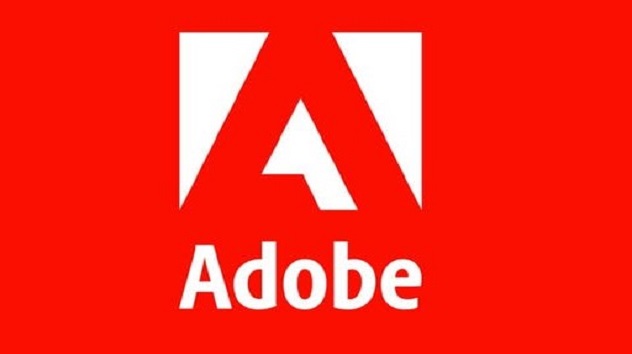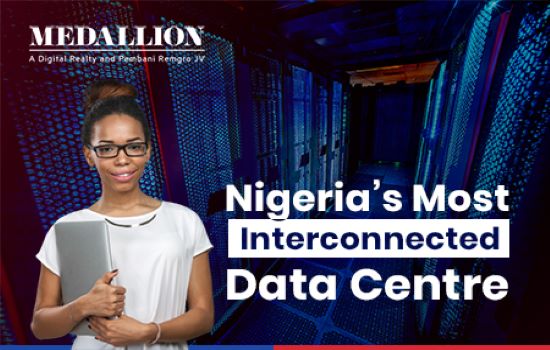E-Business
Best DR Plan Can be Invalidated by a Wrong Hand-Dijkstra
Marc Dijkstra, chief technology officer, Symantec in charge of the Emerging Region including Russia, the Middle East, Southern Mediterranean and Africa. He has an in-depth knowledge of the data management, storage and high availability landscape. Marc worked with Computer Work Station Sales as a support engineer before he moved to VERITAS UK as a Storage and Availability Presales specialist before joining Symantec in 2007. He spoke to emeka okafor.
Promoting Green IT
From Symantec perspective, being a software and infrastructure company and taking into cognizance that we are into storage and virtualization technology, promoting Green IT is something we are heavily into. We have a number of tools that help customers identify areas which they can actually save cooling and heating costs saving amount of storage that they use. As an example, we have one of our products that can identify when you are underutilizing your storage. One of the biggest problems you can have is underutilization of your storage. When you have all these and they are not being used you still pay electricity bill as you need to cool the systems. . We can identify the storage that is not in use and try to drive utilization up by mopping the underutilization storage to the storage element we can identify. So every thing Green IT, we have a number of tools also as a consulting firm that can identify how much power we can save by dragging up utilization process.
Optimizing Storage Resources Utilization
One of the things we looked at when we started the standardization initiative was that it is part of our bold strategies to identify within the storage management brief. One of the things we did was to identify where we could save customers Tier One storage cost by moving data from Tier One storage to the secondary storage having the same data. We do that in subtle space. We have a customer in Nigeria who is looking at ways to take their old data from Tier One old expensive disc and put it on a cheaper disc. He estimated that he could save approximately 80 per cent of his storage disc by moving the Tier One disc into the Tier Two disc at a much lower price than the Tier One disc. It means that the customer doesn’t need to buy a new storage system .He can buy the cheapest disc and a recycle forward will be able to take that data and put it on to shape.
Overview of Products
Symantec has a number of products. I have lost count but I think it has close to 200 products. Symantec is storage and availability company as well as a security company. We have a very bold range of products from the traditional security products, back up products, duplication, archiving, enterprise desktop management etc, but the joy of Symantec is that we are a heterogeneous company and we have a very broad range of applications on storage. According to IDC Report (late last quarter) Symantec is now the number one leader in the storage management space and we lead significantly over the other competitors. The product I work more is on high availability and storage management space.
Guidelines for a Successful Storage Strategy
Testing, testing, and testing. We did a Disaster Recovery Report in 2008 and one of the problems we had is that people are not testing the disaster recovery strategy enough. People will do DR test once a year but it is not effective. It’s really not effective to cover all the bases. Two tests once every six months is ideal. There is need to do for instance virus test to ascertain what will happen if virus hits the system and that is very important. Besides testing, DR is expensive especially if you are running critical operations like Telcos and mobile providers of the billing system. You cannot switch that system off otherwise you will be affecting the service of your consumers. So you have to balance how you are going to test your DR without affecting your customers, your bottom line, and your staff. I think the industry is thinking more along how to automate the testing without having disruption and Symantec has ways we actually allow you to automate DR tests without disrupting your actual application.
It is one key word when it comes to disaster recovery- the planning. Having a good disaster recovery plan and doing your risk analysis is most important in DR strategy because whatever happens we make sure that it works.
Best Practice for Disaster Recovery
It is firstly, the plan has to be in place. Be it internal plan or an outside consulting plan, the business has to have understanding of what the risk appetite is. What can they afford to do without and for how long? If it is a financial institution that is doing online trading, it can’t really be down. Government legislation in some cases will actually disallow that so your risk appetite has to be assessed before you can identify. So once your DR plan is actually in place and you have identified your risk appetite then you can identify the way you go. But remember how much you do it depends on cost as we have a sliding scale for various services I think the most important thing when talking about best practice is that once you identify the risk appetite you must identify plan and once your plan is in place it must be assessed. We have a very interesting statistics that in 2007 we found 55% of our respondents at the C level were involved in DR planning process. Last year we found that it dropped to 33%. So one question is that has DR become little focused or was it a defect in the organization that it just had to happen? It’s a question I have asked in Nigeria. The people I have spoken to in Nigeria are very more executive level discussions. The C level is involved in the DR strategy, DR process and DR planning. Either that in your office you will have a DR strategy committee to discuss the most important issues on DR strategy and not doing it once and leaving it because you need to continue with your testing on hourly basis and at the centre. One wrong man point can invalidate the whole outline
Focus of Symantec Products
It all depends. A lot of people even small to mediums are trying to locate their risks appetite, what they can do to keep their businesses up and running. From small to mediums if they lose their data could mean the end of the business. So you get to look at ways to do it. Small to mediums may not have DR strategy the way a financial house will have with gig net, internet. We play in all spaces, be it small to medium businesses, even to consumer.
IT Risk Management
IT risk management from Symantec perspective, we do certainly get involved in IT risks assessment in understanding the risk appetite with the customer. From my perspective, IT risk management understands the risk of the business either from internal or external, hacking, be it data loss, natural disaster or whatever it could be and und a committee in change control. Remember if you don’t have a change committee you are introducing risk into your environment.
Customers in Nigeria
I met with a number of executives from finance a couple of months back and the interesting thing to me was that although this knowledge is special but what made clear to me at the moment is that the CIOs are certainly coming down the line. Nigeria seeing what is going on in the Americas, India, MEA and Europe, there is legislation about keeping your data available, there’s legislation about holding data especially in the finance industry so it is in their minds. I wouldn’t say from my experience in dealing with the people. Email availability all the time is very important to people, I have a very lengthy discussion with CIOs about a month ago around the six points and it is very much in the full front of their minds.
New Products
What you will see coming down the line in the nearest future is looking at ways of mitigating the risks to the business. We mitigate risk by automating processes and by doing correct testing. What we will be looking at in our new product is that we will be looking at ways to go and test the environment and do risk analysis on the environment, weigh and identify the risks and report home the risk before problem happens. High availability cost ream technology will do the risks of the strategy and help check analysis and find out where issues are. It is one of the control processes you can look at multi- faceted, if one of the PCs fails its all about mitigation of risks
Energy Problem
One of the things Symantec is driving for is to reduce the amount of heating in the environment. One of the things talked about in the DR report as well as the stage of the data centre report just released is that the strategy of the CIO data center manager is still around consolidation, virtualization and automation. These are the three key areas in the 2007 report that came up again in 2008. By going the virtualization route, you are driving down the electricity needs. The Green IT makes this strong. So if we can tie Green IT with the strategy of the data center we are driving down the huge need of electricity. With our technology you use less service and storage so we are helping the customer drive down demand for electricity used to cool and power the data center. Virtualization is one of the strategies from Symantec through which demand for storage electricity is reduced. With the cost ream technology you don’t need as many services so you are driving down the cost of electricity again. There is electricity problem even in South Africa also. It is not just Africa that has electricity problem. There was a report in California running out of power. There’s a problem in Florida. Electricity is a global crisis so Symantec and IT industry have to look at innovative ways to drive down need for this power.
E-Business
Schmidt, Ex Google Chief Says AI Risky in Terrorist Hands

Eric Schmidt, former Google CEO has expressed concerns about the extreme risks posed by artificial intelligence (AI) falling into the hands of terrorists or rogue states.

Eric Schmidt, former Google CEO
He warned that nations such as North Korea, Iran, and Russia could adopt AI technologies to develop weapons capable of causing significant harm, including biological weapons.
Schmidt urged governments to oversee private tech companies, emphasising, “The real fears I have are not the ones most people discuss about AI, I talk about extreme risk.”
“I’m always worried about an ‘Osama Bin Laden’ scenario, where truly evil individuals take control of some aspect of modern life to harm innocent people,” he added.
With private companies driving AI advancements, he stressed the need for careful government monitoring and regulation. “It’s really important that governments understand what we’re doing and keep their eye on us,” he said.
His remarks followed a two-day AI summit in Paris, where the UK and the U.S. declined to sign a communiqué outlining the future direction of AI. The declaration on “inclusive and sustainable artificial intelligence for people and the planet” was endorsed by 57 countries, including India, China, the Vatican, the EU, and the African Union Commission.
The UK justified its decision, stating that the agreement lacked “practical clarity” on global AI governance and national security concerns.
Schmidt supports U.S. export controls restricting the sale of advanced AI microchips to certain countries, aiming to slow adversaries’ progress in AI research.
He also highlights the importance of international collaboration on AI safety, suggesting that cooperation with nations like China is essential to addressing global AI challenges.
E-Business
OpenAI CEO Rejects $97.4Bn Takeover Bid from Elon Musk

Sam Altman, chief executive of ChatGPT-owner OpenAI, has firmly declared the company “not for sale” following a $97.4bn (£78.4bn) takeover bid from a consortium led by Elon Musk.

Elon Musk
Speaking at the AI Action Summit in Paris, Altman emphasised OpenAI’s mission to develop AGI (artificial general intelligence) for the benefit of humanity.
Marc Toberoff, attorney for Elon Musk, confirmed the bid submission on Monday.
In response, Altman humorously offered to buy Twitter for $9.74 billion on Musk’s platform.
Unlike many tech giants, OpenAI is not publicly traded but operates through a complex partnership between non-profit and for-profit entities.
Musk aims to return OpenAI to its non-profit roots, despite owning a rival firm, xAI.
Christie Pitts, a tech investor, expressed scepticism about Musk’s intentions, noting his competitive interests.
Altman echoed this sentiment, suggesting Musk’s move disregards OpenAI’s mission.
Altman, who holds no stock in OpenAI, advocates transforming the organisation into a fully for-profit company to raise more funds for AI research.
Although the board has the final say, the $97.4bn offer falls short of OpenAI’s previous $157bn valuation and rumoured $300bn in future funding talks.
Toberoff stated the consortium might increase their bid. Meanwhile, OpenAI is collaborating with Oracle, a Japanese investment firm, and an Emirati sovereign wealth fund on “The Stargate Project,” a $500 billion AI infrastructure initiative announced by President Donald Trump.
E-Business
Adobe Launches AI Video Tool to Compete with OpenAI

Adobe yesterday released the first public version of an artificial intelligence tool that can generate video clips and revealed how much it will charge, but said it will not set pricing for major users such as studios until later this year.

The Firefly Video Model, as Adobe is calling the service, will compete against Sora, a model developed by ChatGPT creator OpenAI, and startup Runway, both of which currently offer video-generation services. Facebook owner Meta Platforms has also developed a video-generation AI model but has not given a timeline for when it will be released.
Adobe’s model differs from its rivals because it is geared toward generating clips that will fit into how film and television studios use Premiere Pro, its flagship video editing software.
To that end, many of the features that Adobe is emphasizing revolve around feeding existing shots into the video model and asking it to generate clips that fix or expand on shots that were taken on a real production set but that did not come out quite right.
Adobe said the service will generate five-second clips at 1080p resolution. While that is shorter than the clips of up to 20 seconds generated by OpenAI’s service, Adobe executives said the majority of individual clips in most productions are only three seconds.
Adobe said a user can generate 20 clips per month for $9.99 and 70 clips for $29.99. That compares with 50 videos for $20 per month with OpenAI’s plan at lower resolution and a $200 OpenAI plan that can handle longer, higher resolution videos.
Adobe is also working on a “Premium” pricing plan for studios and other high-volume video users and will release those pricing details later this year. Alexandru Costin, Adobe’s vice president of generative AI, said the company is working to generate 4K video and will remain focused on quality rather than longer clips.
“We actually think that great motion, great structure, great definition scheme, making the actual clip look like it was film, is more important than making a longer clip that’s unusable,” Costin told Reuters.

 General News2 days ago
General News2 days agoMTN Increases Data Prices Amid NCC’s 50% Tariff Hike Approval

 E-Financial2 days ago
E-Financial2 days agoFG Takes Full Ownership of Keystone Bank

 E-Financial2 days ago
E-Financial2 days agoCBN Rolls out New ATM Transaction Fees Effective March 1

 Telecom2 days ago
Telecom2 days agoSuspend 50 Percent Telecom Tariff Hike, Reps Urge NCC

 E-Financial2 days ago
E-Financial2 days agoAfreximbank Invests $52bn in Nigeria, Plans Energy Bank

 News2 days ago
News2 days agoSEC Urges State Governments to Explore Investment Opportunities in Capital Market

 Telecom2 days ago
Telecom2 days agoNASENI CEO Mandates Institutes to Use Agency’s Technologies and Products

 General News2 days ago
General News2 days agoAfrica’s Startup Funding Increased by 240%















